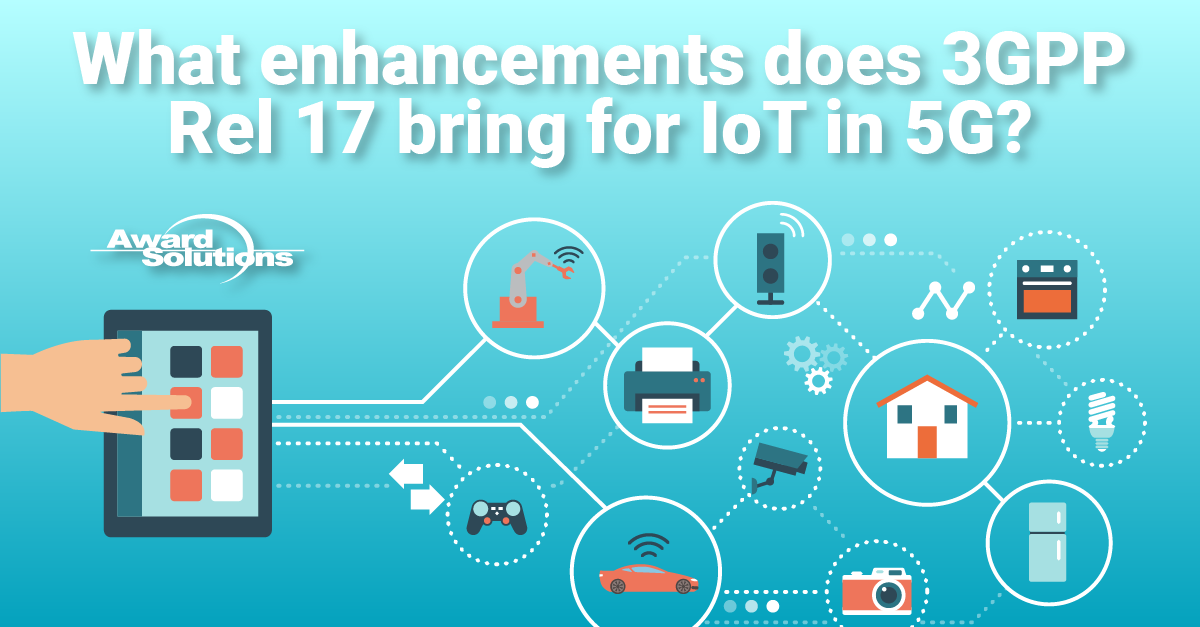
5G Evolution in 3GPP: Roadmap Focused on IoT Requirements
5G Release 15 provided a great foundation for the three usage scenarios defined by the ITU: enhanced Mobile Broadband (eMBB), Ultra-Reliable Low Latency Communications (URLLC), and massive Machine Type Communication (mMTC).
5G Release 16 focused mainly on machine-critical Internet of Things (IoT) requirements with improved metrics for latency and reliability, 5G New Radio positioning, and 5G Time-Sensitive Networking (TSN).
5G Release 17 is the third milestone in the 3GPP roadmap to deliver performance boosts to the 5G system. 5G R17 extends the reach of 5G into new devices and deployments, along with continued performance enhancements of existing 5G features. In addition, 5G R17 focuses heavily on massive IoT and brings new enhancements to support IoT devices.
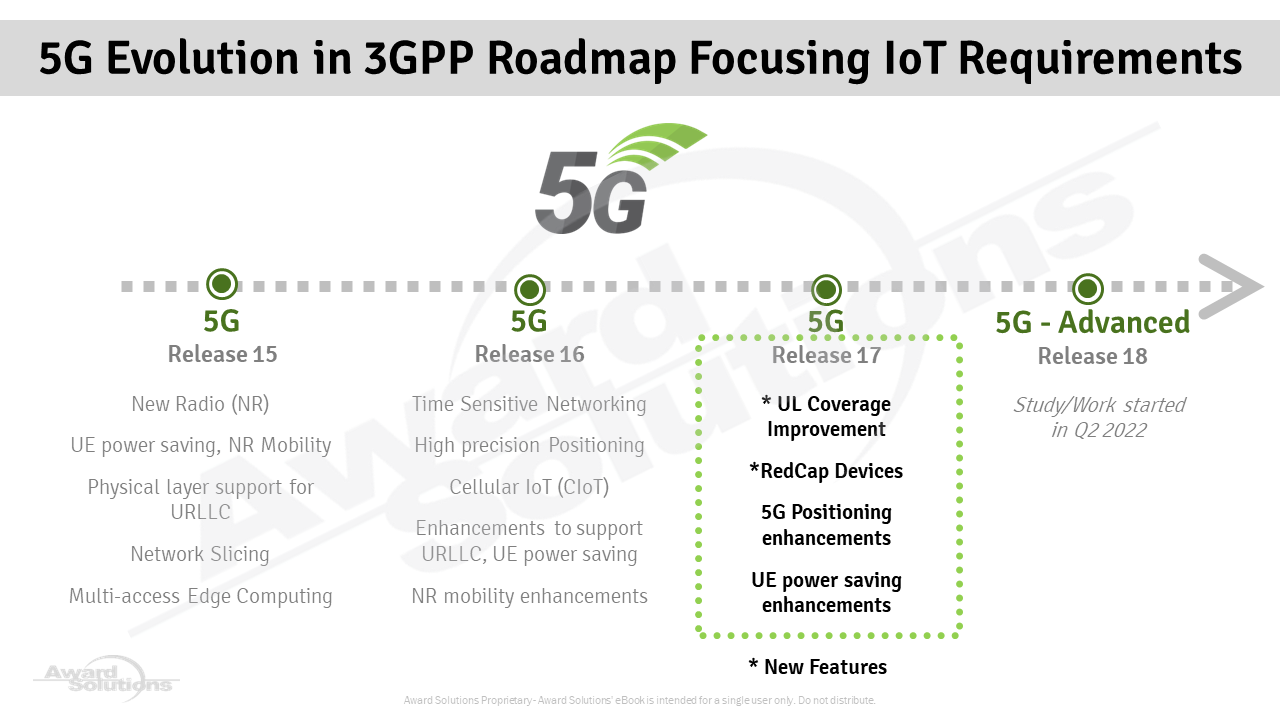
IoT-focused 5G Release 17 Enhancements
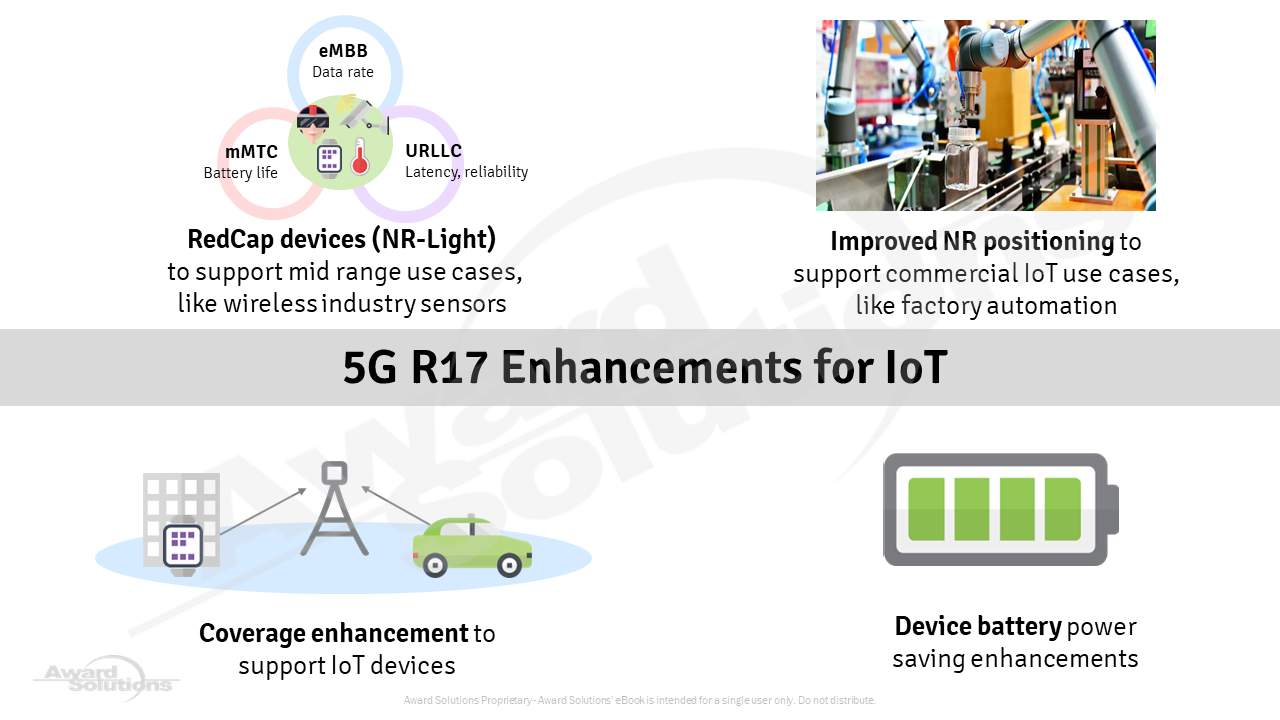
RedCap Devices (NR-Light)
Greater support for mid-range use cases like wearables.
The evolution of 5G technology extends its support to eMBB, URLLC, and mMTC. Each of these paradigms has significantly different requirements regarding data rates, latency, reliability, connection density, and device battery life. However, the requirements of some use cases, such as video surveillance, industry sensors, wearables, etc., fall between those of eMBB, URLLC, and mMTC. In other words, service requirements of mid-range use cases lie somewhere between relaxed mMTC requirements and highly stringent URLLC requirements.
To address these mid-range use cases, 5G R17 introduces Reduced Capability (RedCap) New Radio devices (also known as NR-Light) targeting lower complexity, lower cost, and longer battery life devices. A RedCap device has reduced NR capabilities and is significantly less complex than a regular NR device. To support RedCap devices, 5G R17 has defined reduced NR capabilities. RedCap UEs do not support Carrier Aggregation (CA), Multi RAT Dual Connectivity (MR-DC), and Dual Active Protocol Stack (DAPS) related device features and capabilities.
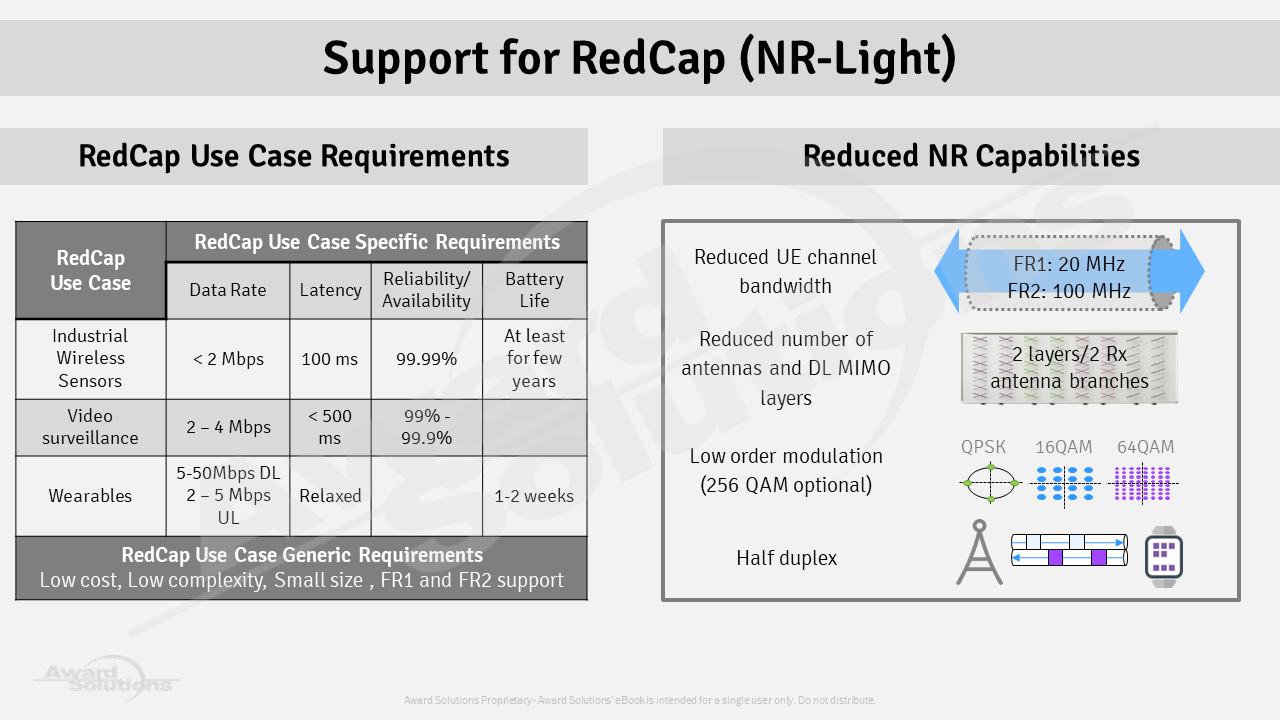
Coverage Enhancement to Support IoT Devices
Since most of these devices are located in remote or hard-to-reach areas, ubiquitous network coverage is a critical requirement for mMTC devices, such as smart utility meters and sensors. Considering PUSCH and PUCCH potential coverage bottlenecks, 5G R17 has introduced two mechanisms to improve uplink coverage: PUSCH/PUCCH repetitions and PUSCH over multiple slots.
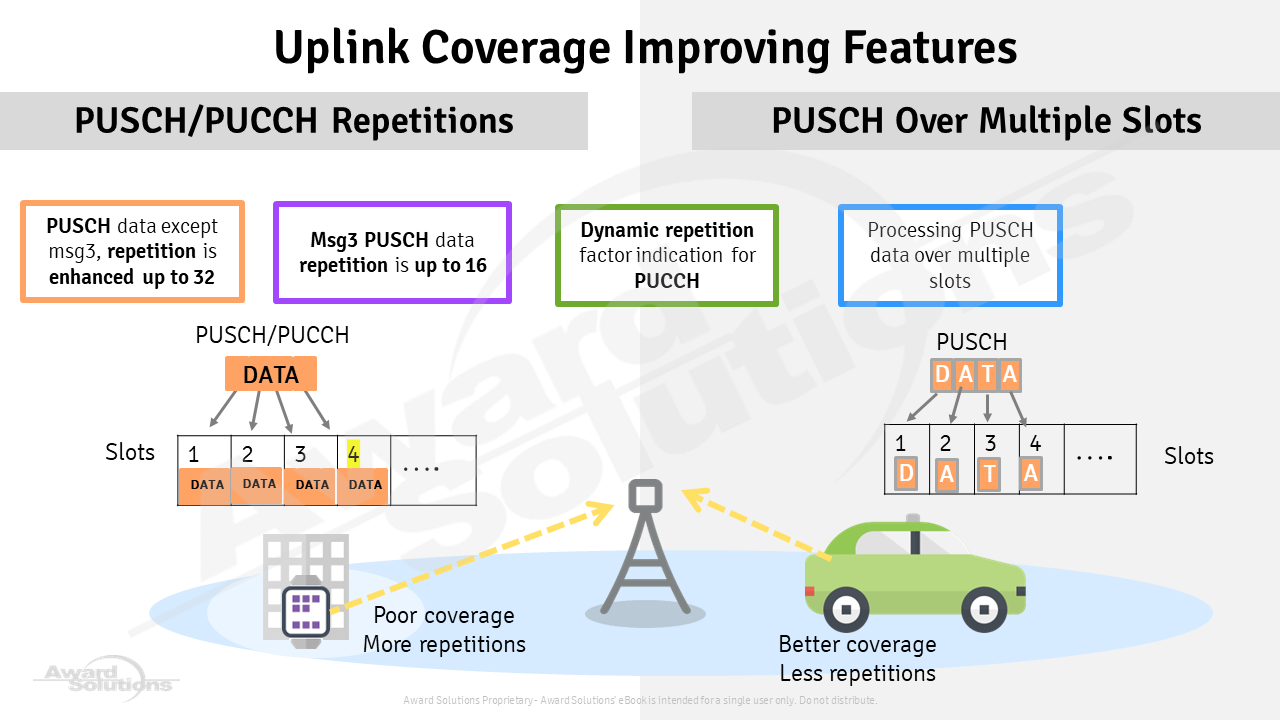
With PUSCH/PUCCH repetitions, reliable uplink coverage enhancement is achieved through the repeated transmission of uplink data and control signaling. A maximum number of PUSCH repetitions is allowed in 5G R17, but the actual number of PUSCH repetitions is determined based on the device’s path loss. The gNodeB can dynamically adjust the number of PUCCH repetitions based on channel conditions and traffic load.
Processing a PUSCH transport block (TB) over multiple slots enables higher energy per resource element to enhance coverage.
UE Battery Power Saving Enhancements
In continued efforts towards further UE battery power saving, 3GPP 5G R17 has introduced new features for both RRC Idle/Inactive and RRC Connected devices.
Small Data Transmission (SDT) and power-efficient paging reception features are defined for RRC Inactive/Idle devices.
Similarly, features of relaxed Radio Link Monitoring (RLM) and Beam Failure Detection (BFD) measurements are introduced for RRC-connected UEs.
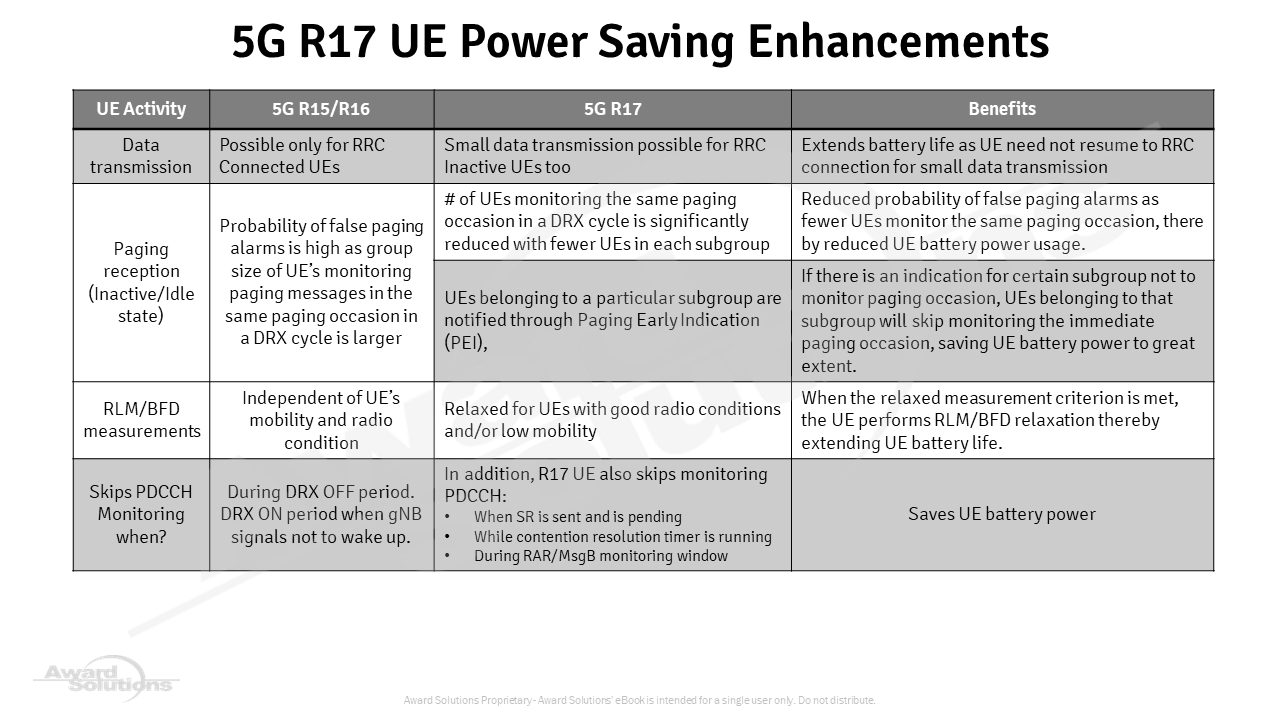
Improved NR Positioning
Extends support for industrial IoT uses. Ex. Factory automation.
5G R16 targeted NR positioning location accuracy (horizontal and vertical) of less than three meters for commercial use cases.
5G R17 NR positioning (horizontal and vertical) is further improved for commercial and industrial IoT use cases, such as factory automation, targeting location accuracy of less than one meter.
